Louisiana Sinkhole Spoils Bayou Paradise
Air Date: Week of June 13, 2014
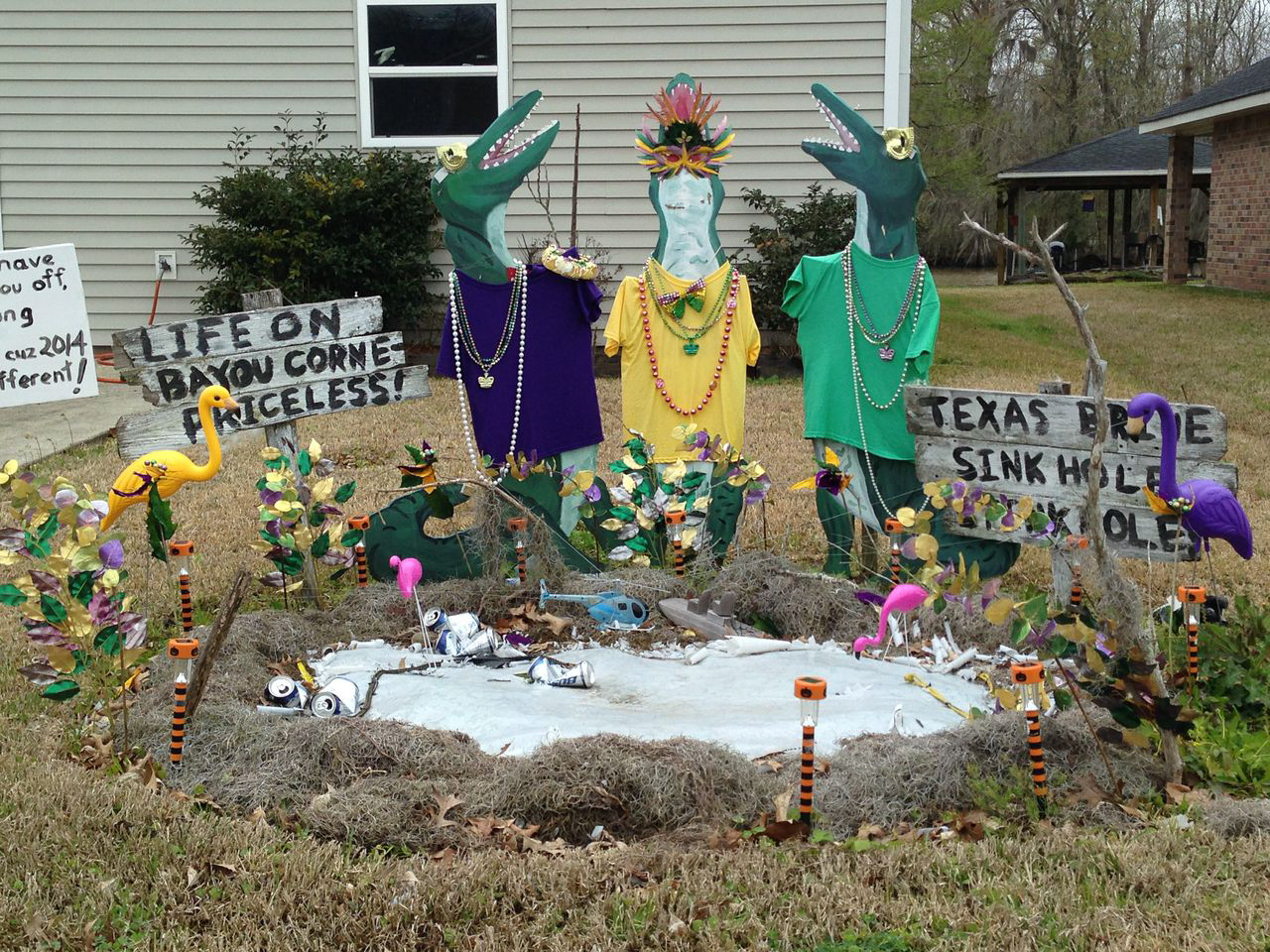
Protest gators in their Mardi Gras finest (photo: Emmett FitzGerald)
In 2012 a salt mine collapsed in Southern Louisiana, causing a sinkhole to open up just outside the town of Bayou Corne. Today, the hole is nearly thirty acres in size, and this picturesque swamp community is basically a ghost town.
Transcript
CURWOOD: Back in 2012 a massive sinkhole appeared in a cypress grove just outside of Bayou Corne, a small town in Southern Louisiana that shares its name with the local marsh lands. The giant gulf opened up when an underground cavern made by salt mining collapsed. The company Texas Brine had been drilling into one of the many salt domes beneath Louisiana to extract sodium chloride for plastics production at nearby petrochemical plants. Living on Earth’s Emmett FitzGerald first visited Bayou Corne in 2013, as the community struggled to respond to the catastrophe unfolding around them. And so far things have only gotten worse.
FITZGERALD: Any time there’s an environmental problem in Louisiana, scientist Wilma Subra is on the case. She first showed me around Bayou Corne a year and a half ago.
SUBRA: It is heart-wrenching to see it compared to what it was like when you were here last time. It really is.
[CAR DRIVING]
FITZGERALD: As we drive into town, past pipelines and gas flares, Wilma points through a gap in the trees.
SUBRA: OK, so, and there’s the sinkhole you see it?
FITZERALD (on tape): Oh yeah. It looks a little bit bigger.
SUBRA: Oh yeah, it’s growing. It’s growing constantly.
FITZGERALD: The last time I was here, the sinkhole covered 20 acres. Now it’s almost half as big again. The 29-acre hole is filled with dirty water—a polluted lake in the middle of a forest. Sonny Cranch, a spokesperson for Texas Brine, says he thinks the sinkhole is done growing.
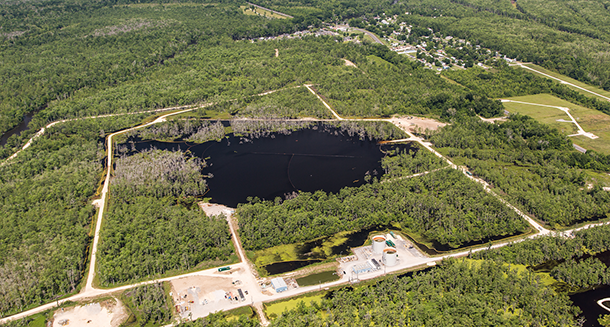
Texas Brine has erected berms around the sinkhole to try and contain its growth. Officials think the sinkhole is almost done growing, but some worry that the hole could expand all the way to the Bayou. (Photo: Jeffrey Dubinsky/Louisiana Environmental Action Network)
CRANCH: The sinkhole seems to have reached its maximum size right now. It has not grown hardly at all in the last eight months. So we feel that it’s been contained and contained properly.
FITZGERALD: But a video shot on April 1 shows the sinkhole eating a forty by ten-foot slab of earth. Wilma says that as sediment continues to flow into the collapsed cavern underground, the sides of the hole slough in, swallowing entire trees into the brackish muck. She’s worried that if the sinkhole keeps growing, the salty water could get into the bayou.
SUBRA: I think the issue right now is that it’s going to get to Bayou Corne and then it’s going to flow into the lake systems all the way to the Gulf.
FITZGERALD: Wilma says that if the brine from the sinkhole gets into that sensitive fresh water system, it would be an ecological disaster.
SUBRA: The salt water, the brine, will kill all the vegetation all the plant and animal life on that bayou system, and so its just going to move down there like a great big brine spill and just contaminate and destroy everything.
FITZGERALD: It’s already destroyed a once tranquil, swamp-side community. When the sinkhole first opened up, local officials ordered residents to evacuate, and many people moved out. Still, the homes and the yards were neat and tidy, as if their owners planned to return any day. Today the streets are abandoned and desolate.
SUBRA: There’s weeds in all the yards, “keep out” signs, no trespassing signs, empty houses. It’s really, really a sad situation.
FITZGERALD: We turn down a street called Sauce Picante and park next to a log-cabin style house with a green tin roof that belongs to the Gregoire family. When the evacuation order went out, the Gregoires moved into a camper in the neighboring town of Pierre Parte, but Wilma thinks the family may be back.
SUBRA: Their garbage cans are out here see, so they must be staying here or spending a good bit of time.
FITZGERALD (on tape): So you can tell which houses have people in them by the garbage cans?
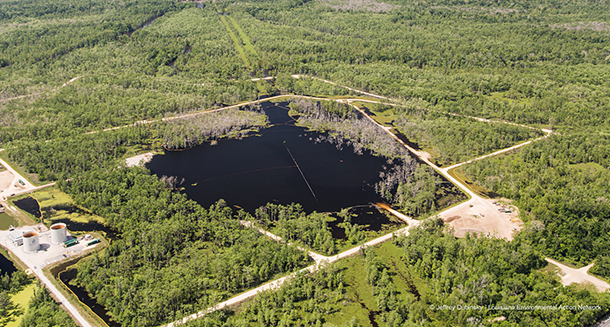
The sinkhole at Bayou Corne (photo: Jeffrey Dubinsky/Louisiana Environmental Action Network)
SUBRA (on tape): Right, right. But we didn’t see any other garbage cans, did we?
[FOOTSTEPS AND FRONT DOOR SLAMS]
FITZGERALD: Jennifer Gregoire meets us at the screened front door. Her two kids hide behind her legs as she tells us that life in the camper was harder than she had expected.
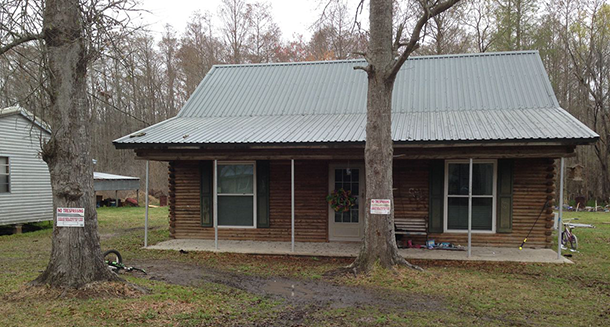
Jennifer Gregoire’s house on Sauce Picante in Bayou Corne (photo: Emmett FitzGerald)
GREGOIRE: The camper is too small. The lot was too small where we were; it was too close to the highway. The kids couldn’t play. On top of it, you figure little bitty bathroom and a ten gallon water tank. It’s not enough to bathe four people.
FITZGERALD: So a few months ago they moved back to Bayou Corne. Jennifer says the kids are glad to be home, but she’s nervous.
GREGOIRE: Is the sinkhole getting bigger? Definitely. It’s still dangerous. We still have that worry that, what if the monitors go off? What if something happens?
FITZGERALD: The monitors Jennifer’s talking about measure natural gas. When the sinkhole first opened up, it released a pocket of gas into the groundwater under the town. Gas started bubbling up in back yards, and Texas Brine installed monitors in houses to warn people in case the gas beneath them reached an explosive level.
[SOUND OF WELL]
FITZGERALD: The company also drilled 55 wells throughout the town to try and suck the gas out of the aquifer. Wilma Subra again.
SUBRA: So this is a well that’s going down to that layer of gas floating on the aquifer. And so it’s bringing the gas up to the surface, and then pushing it down that hosey pipeline.
FITZGERALD: From there the gas is pumped to the outskirts of town where it’s burned off in giant flares. Texas Brine spokesperson Sonny Cranch says the company’s making good progress getting the gas out.
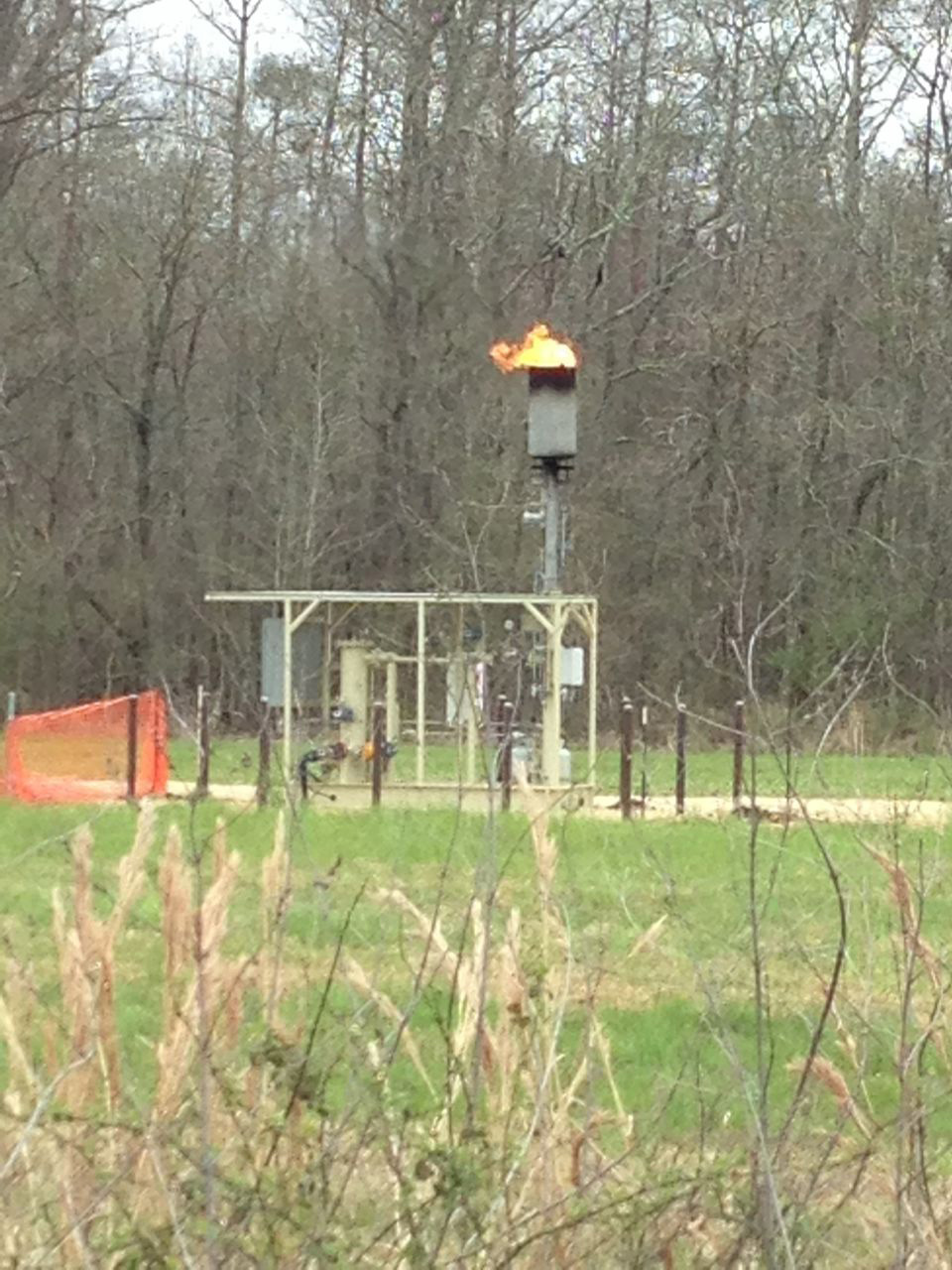
The gas is flared off at the edge of town (photo: Emmett FitzGerald)
CRANCH: We’ve removed about 28 million cubic feet of gas.
FITZGERALD: He’s confident there isn’t much left.
CRANCH: It’s a finite amount we think. There’s been no recharge that’s been indicated, so we think that gas will all be out in the next several of months.
FITZGERALD: But John Boudreaux, director of Emergency Response for Assumption Parish, isn’t so sure. There’s still gas in the aquifer, he says, and that remains his biggest safety concern.
BOUDREAUX: That risk still exists, in fact some areas show gas in the shallow sands and those sands are only twenty feet beneath the homes. So that risk is not diminished, it’s still there.
FITZGERALD: Jennifer Gregoire, living on Sauce Picante, has decided to live with that risk. She says she doesn’t have much of a choice.

This well, next to a home, sucks natural gas up from the aquifer below (photo: Emmett FitzGerald)
GREGOIRE: I understand the dangers and the risks I’m putting my family in, but it’s cheaper, and it’s easier. I can’t afford to buy nothing else.
FITZGERALD: The Gregoires are one of only about 20 families left in Bayou Corne. If a car drives down Sauce Picante today, it’s likely either disaster tourists or looters. Jennifer says it’s no longer a good place to raise a family.
GREGOIRE: My son just had a birthday we can’t…[CRYING] we couldn’t throw a party for him this year at the house. That was bad for him. Nobody wants to come here.
FITZGERALD: Since the sinkhole developed, Texas Brine has bought out 66 property-owners, but many more residents have taken legal action. On April 15, Texas Brine reached a $48.1 million dollar settlement with a class of around 90 households. Sonny Cranch calls it a fair deal.
CRANCH: Those individuals will receive not only an amount for the value of their property, but an amount as, additional compensation for, let’s call it damages, but it will be above and beyond the value of the property, the fair market value of the property.
FITZGERALD: A court-appointed special master will decide how to divide up the $48 million.
CRANCH: Then there will be a closing, and we will acquire their property.
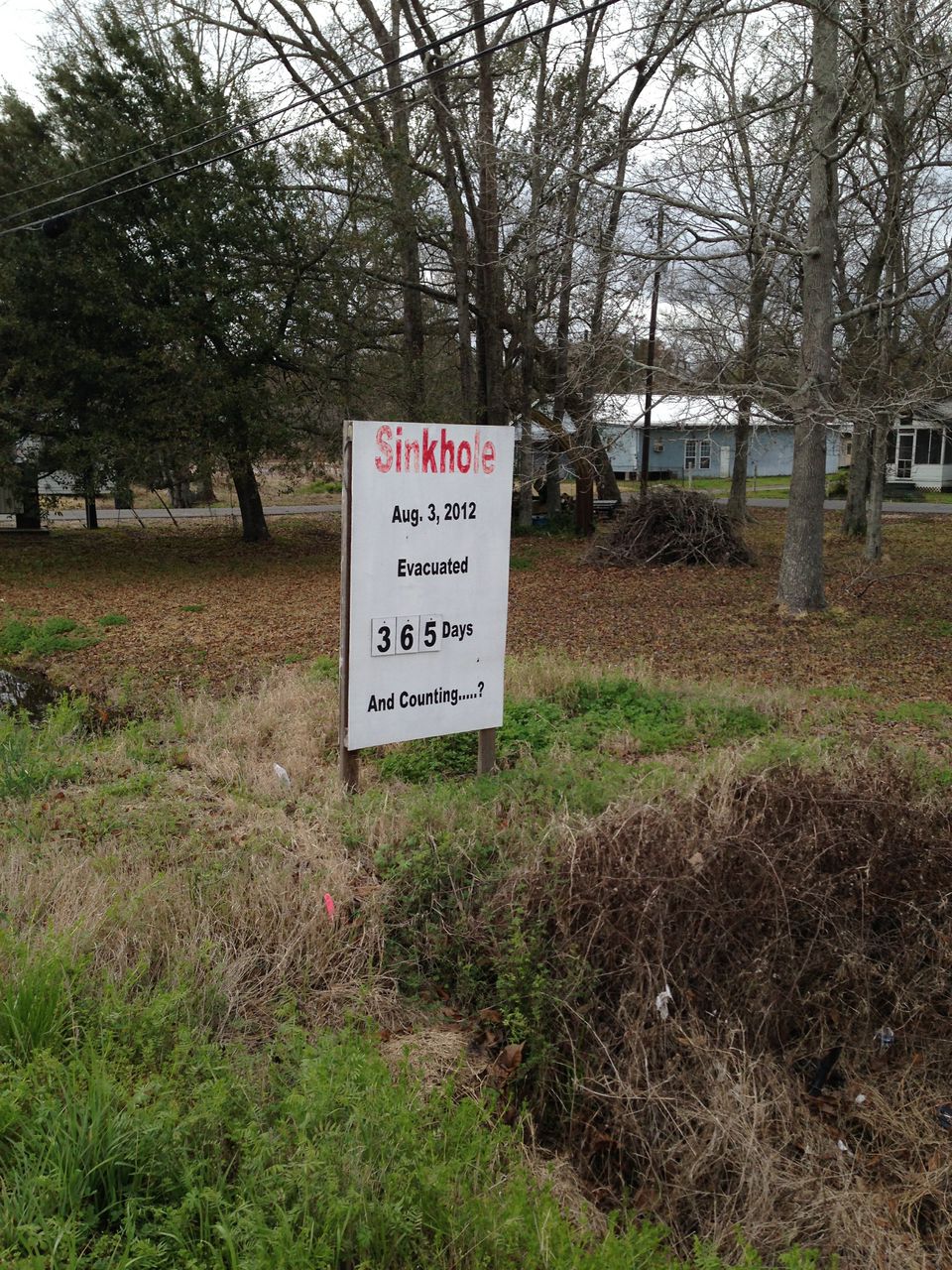
A sign on the outskirts of Bayou Corne (photo: Emmett FitzGerald)
FITZGERALD: But some locals don’t want any part of that.
LANDRY: OK, the name is Dennis Landry and I live at 120 Sportsman’s Drive Belle Rose, Louisiana, also known as Beautiful Bayou Corne.
FITZGERALD: Dennis runs a once popular fishing lodge called Cajun Cabins.
LANDRY: If you like the outdoors and you like ducks and guns—sportsman’s paradise—this is it.
FITZGERALD: The walls of Dennis’ home are covered with vintage rifles, fishing rods, and an assortment of stuffed ducks and geese. Right now, Dennis is renting out his cabins to state officials involved in the cleanup, but he worries about the future of his business.
LANDRY: It’s been a year and a half since I’ve been able to rent to my regular customers, new people who still call, wanting to come, and I tell them, well, I don’t have anything available right now. So what’s going to be the long-term impact?
FITZGERALD: Dennis knows there’s natural gas beneath his house, but for now, he and his wife are sticking it out.
LANDRY: We still live with a suitcase packed and our medicine all in one bag ready to go at a moment’s notice. We’ve kind of learned to live with the monitors and live with the gas, and keeping our fingers crossed that all these vent wells work and they get the gas out.
FITZGERALD: Environmental disasters are a fact of life in Louisiana, where weak environmental regulation has enabled rampant, often risky resource extraction. The BP oil spill in 2010 was state’s most high profile eco-catastrophe, but in 2003, a natural gas storage cavern leaked beneath the town Grand Bayou, a few miles down the road from Bayou Corne. The entire town was evacuated, and all that’s left today are cement slabs where the houses used to be.
But one man in particular wants to use the sinkhole at Bayou Corne to spur environmental regulation at the state level.
[AMBIENT JAZZ MUSIC]
HONORE: My name is Russell Honore, Liutenant General United States Army, retired.
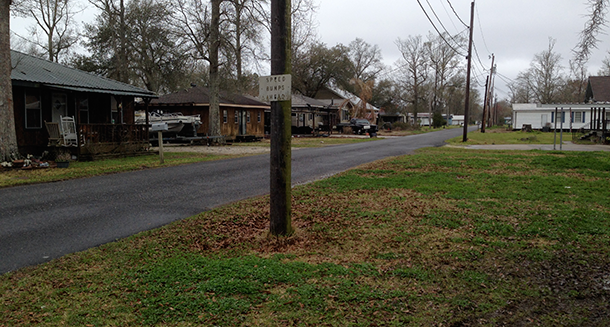
Today the streets of Bayou Corne are desolate (photo: Emmett FitzGerald)
FITZGERALD: General Honore is a local legend around here. He coordinated the military relief effort during Hurricane Katrina in 2005, but since retiring he’s become a champion for the environment in Louisiana. At a restaurant in downtown New Orleans, he says the situation in Bayou Corne shouldn’t surprise anyone.
HONORE: All the extraction companies with all the lobbyists they have, they have bought our government. And they’ve created laws that favor them and their greed. As a result of that, we end up with a situation like we have at Bayou Corne.
FITZGERALD: Last year, General Honore launched The Green Army, a coalition of organizations working together to advance an environmental agenda throughout the state. The Green Army is working with Wilma Subra and others to tighten regulations on salt domes, but they’re thinking bigger than Bayou Corne. The most worrying environmental problem in Louisiana may be the coastal erosion crisis. Every year the state loses 25 to 35 square miles of coastal wetlands to the Gulf of Mexico. Many scientists blame gas companies for building pipelines and canals through the delicate marshes, and General Honore wants the Green Army to put a stop to it.
HONORE: The Green Army doesn’t have an address it’s an idea, of people coming together to say you must stop polluting our environment, because if you don’t stop polluting this environment, we won’t be able to live here anymore. Our coastline will go away and the Gulf of Mexico will be in New Orleans.
FITZGERALD: The Green Army supports a lawsuit filed by the New Orleans area regional levee board, demanding that 97 oil and gas companies restore Louisiana’s coastal marshes. But Governor Bobby Jindal recently signed legislation that would prevent the lawsuit from moving forward. General Honore says that if they want to save Louisiana’s environment, first they’re going to have to fix the government.
HONORE: The head of the committee that oversees oil and gas in Louisiana, guess what business he’s in. He’s got a gas company, and he’s the head of the committee that writes the laws that control oil and gas. How could that be?
FITZGERALD: Louisiana is the second largest producer of natural gas, and the seventh largest producer of oil in the United States, but General Honore says that most people don’t benefit from all this resource extraction.
HONORE: Growing business is good, creating jobs, but in Louisiana we’re the second poorest state. What have the people of Louisiana gotten from this suffrage we've been through?
FITZGERALD: Back on Bayou Corne, Dennis Landry tells me he has sympathy for these companies, even Texas Brine. He used to work in the gas fields.
LANDRY: I mean they’re out just like any other business in the world they’re out to make a profit. If they can do it and they can do it cleanly without sacrificing the environment, you know let’s do it. The world needs that oil and gas. The world needs brine produced by Texas Brine. The state just needs to be at the top of their game to regulate, make sure they’re doing it the right way where it’s environmentally safe.
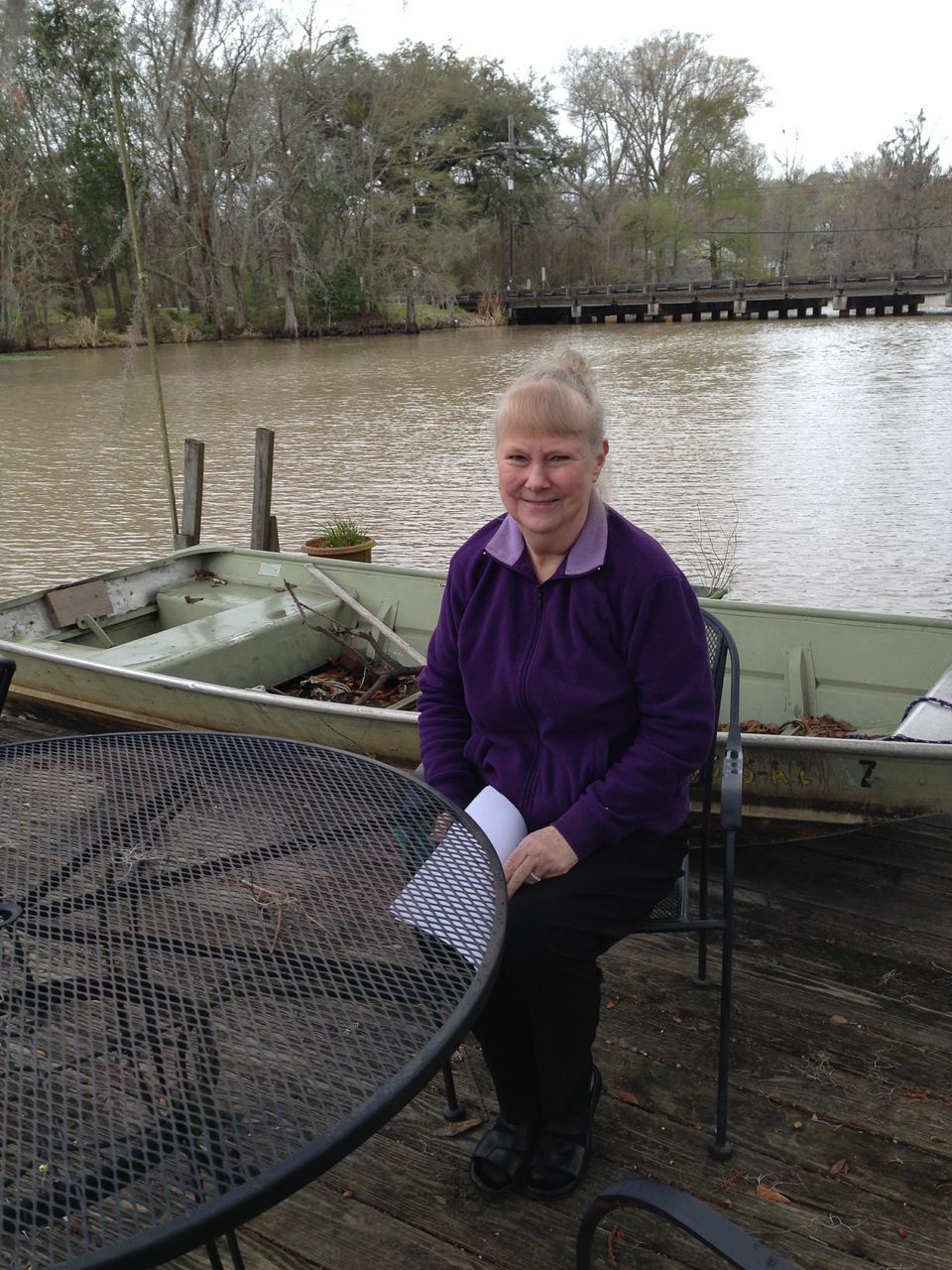
Environmental Scientist, Wilma Subra (photo: Emmett FitzGerald)
FITZGERALD: But that didn’t happen with Texas Brine, and now he and his neighbors are paying the price.
LANDRY: It’s depressing, you know. You drive down the street and you hardly see anybody where once you had a bustling little community with kids running up and down the street and families in the yard. It gives you a sad melancholy feeling, no doubt about it.
FITZGERALD: Then Dennis tells me about an old journal he recently found.
LANDRY: Called Life on Grand Bayou, written by Louise Dupre Hernandez.
FITZGERALD: He says Louise was born in Grand Bayou in 1919 and lived her whole 70 years there.
LANDRY: But 37 years ago she wrote in that book, ‘We have a new neighbor at Bayou Corne, Texas Brine.” And she goes on to just make two sentences, I think. “Texas Brine is a ruination to the land and the area.” Thirty-seven years ago, boy, was that a premonition of something to come. Thirty-seven years ago.
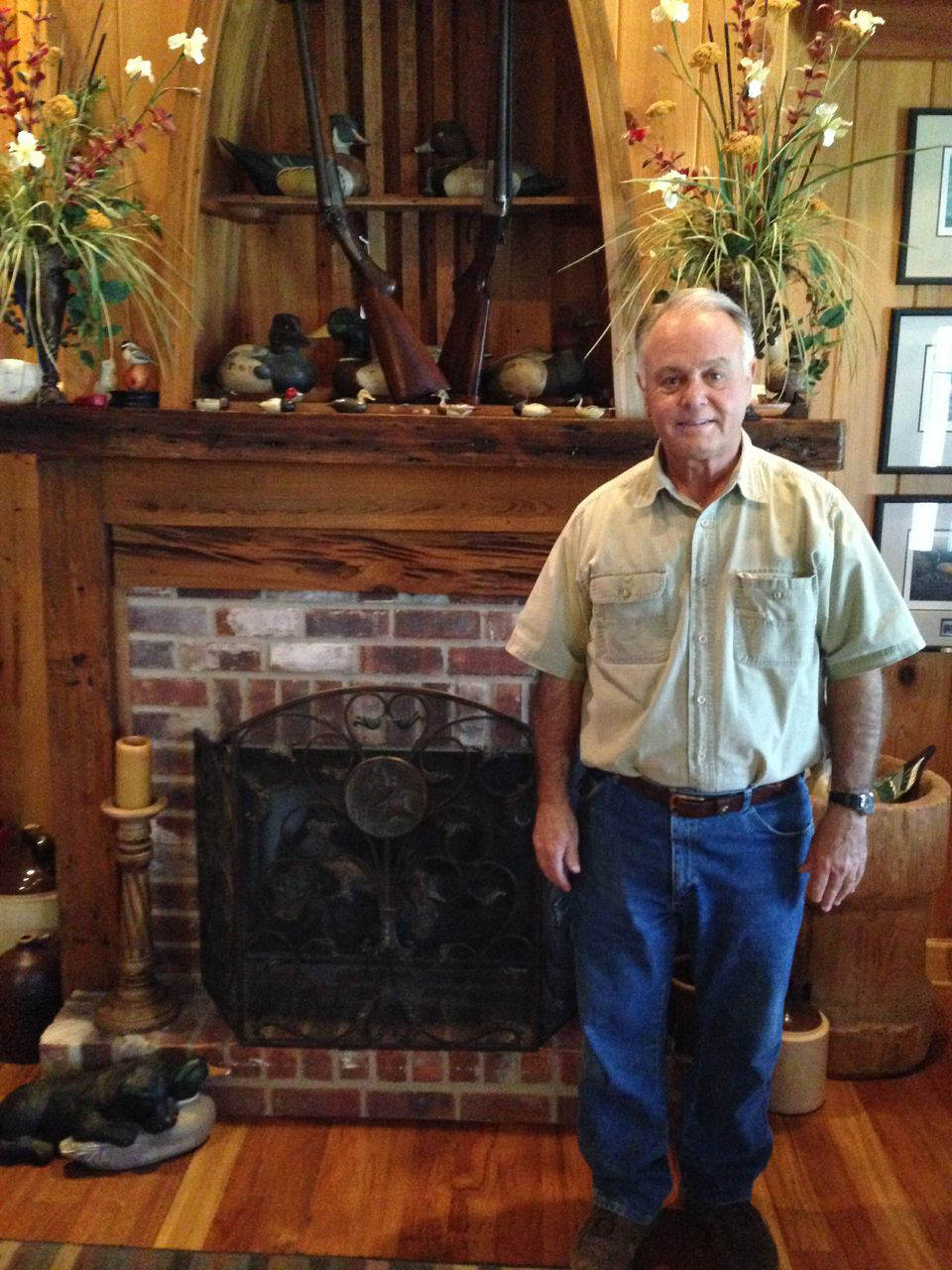
Dennis Landry, in what he calls his Bayou Paradise home (photo: Emmett FitzGerald)
FITZGERALD: But Landry says her premonition went unheeded.
LANDRY: There seemed to be plenty of warning signs that something wasn’t right, and plenty of time to change course. And it didn’t happen. They just kept on plugging along plugging along, mining their cavern, mining their cavern until the unthinkable happened. You know?
FITZGERALD: At the edge of town looking out over a ring of gas flares, a hopeful future for Bayou Corne is hard to picture. With the settlement, more and more residents will sell their homes, and as people continue to leave, the once vibrant community is beginning to look like a ghost town. Dennis Landry still wants to stay, but no matter what happens with the sinkhole or the gas, his bayou paradise will never be the same.
FITZGERALD: For Living on Earth, I’m Emmett FitzGerald in Bayou Corne, Louisiana.
[MUSIC: “Bye Bye Bayou Corne” by Mona Dugas (Self-produced provided by the artist)]
Links
Wilma Subra works for the Louisiana Environmental Action Network
Living on Earth wants to hear from you!
Living on Earth
62 Calef Highway, Suite 212
Lee, NH 03861
Telephone: 617-287-4121
E-mail: comments@loe.org
Newsletter [Click here]
Donate to Living on Earth!
Living on Earth is an independent media program and relies entirely on contributions from listeners and institutions supporting public service. Please donate now to preserve an independent environmental voice.
NewsletterLiving on Earth offers a weekly delivery of the show's rundown to your mailbox. Sign up for our newsletter today!
 Sailors For The Sea: Be the change you want to sea.
Sailors For The Sea: Be the change you want to sea.
 The Grantham Foundation for the Protection of the Environment: Committed to protecting and improving the health of the global environment.
The Grantham Foundation for the Protection of the Environment: Committed to protecting and improving the health of the global environment.
 Contribute to Living on Earth and receive, as our gift to you, an archival print of one of Mark Seth Lender's extraordinary wildlife photographs. Follow the link to see Mark's current collection of photographs.
Contribute to Living on Earth and receive, as our gift to you, an archival print of one of Mark Seth Lender's extraordinary wildlife photographs. Follow the link to see Mark's current collection of photographs.
 Buy a signed copy of Mark Seth Lender's book Smeagull the Seagull & support Living on Earth
Buy a signed copy of Mark Seth Lender's book Smeagull the Seagull & support Living on Earth

